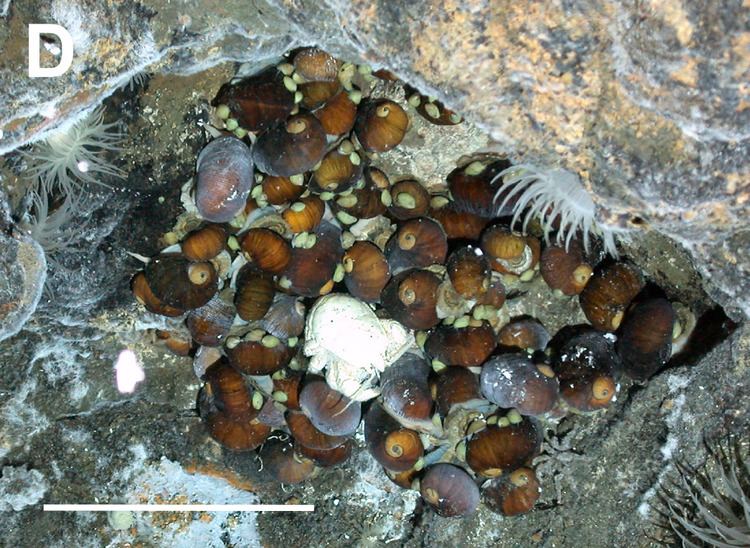Rank Species | ||
 | ||
Similar Gigantopelta aegis, Lepetodrilus sp.East Scotia Ri, Lepetodrilus, Hoff crab | ||
Gigantopelta chessoia is a species of deep sea snail from hydrothermal vents, a marine gastropod mollusk in the family Peltospiridae.
Contents
Taxonomy
The first information about this species, under the name "Peltospiroidea n. sp." or "peltospiroid gastropod", was published on 3 January 2012. Peltospiroidea is the name of a superfamily of gastropods that was used in the taxonomy of the Gastropoda (Ponder & Lindberg, 1997). It contained the only extant family Peltospiridae (and some prehistoric gastropod families). However, the taxonomy of the Gastropoda (Bouchet & Rocroi, 2005) does not use the name Peltospiroidea (in that system, the family Peltopiridae is placed within the Neomphaloidea).
It was described as a new species within new genus Gigantopelta in 2015 and it was classified within the family Peltospiridae.
Distribution
This species is known from two sites near hydrothermal vents in the East Scotia Ridge of the south Atlantic Ocean: from 2,394 m depth at the E9 vent site and from the 2,608 m depth at the E2 site.
Description
The color of the shell is dark olive. The shell has three to four whorls. The width of the shell is from 4.21–45.7 mm.
Ecology
This gastropod is generally found in dense aggregations up to ~1,000 m−2.
Small limpets Lepetodrilus sp. East Scotia Ridge are sometimes found on the shells of Gigantopelta chessoia. Other marine fauna, such as actinostolid sea anemones (family Actinostolidae), crabs in the genus Kiwa, and the pycnogonid arthropod or "sea spider" cf. Sericosura, can be found living together with this species.
It is unclear if Gigantopelta chessoia has symbiotic bacteria in its enlarged oesophageal gland or not. But body of Gigantopelta chessoia has low values of carbon isotope δ13C. This can indicate, that carbon fixation in Gigantopelta chessoia may occur via Calvin-Benson-Bassham cycle by endosymbiotic Gammaproteobacteria.
